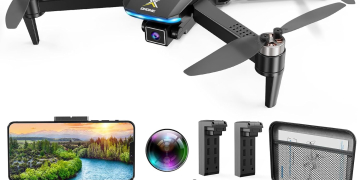staff@slashgear.com (Nadeem Sarwar)
2025-07-02 11:30:00
www.slashgear.com
We may receive a commission on purchases made from links.
If you were to look at the smartphone segment, more specifically, camera hardware, it’s apparent that innovation is a saturated field. Camera sensors have either stopped at 200-megapixel peak resolution, or the sensor format has switched to the 1-inch sensor size peak. Every brand is playing with roughly the same combination, and just switching things around depending on the sensor they want to get the best out from. That assumption is misplaced, and I’ve witnessed it in person.
Over the past eight months, I’ve tried over a dozen high-end phones, from the latest iPhones to the best from Samsung. Of course, Google’s Pixel phones have remained the focus of attention in the Android segment. But in the past couple of years, the best of smartphone camera innovation has eluded the U.S. market. What follows is a list of the best camera phones I tested in the past few months, pushing them as my daily driver for everything from Instagram selfies to video clips for documentary projects.
As part of the ranking protocol, each smartphone was tested in similar lighting, subject, and range scenarios. These are the same protocols that go into the full-fledged reviews of any smartphone we test to ensure consistency and reliability. All the pictures were clicked using the default camera app on these phones, and analyzed on an OLED screen without any post-processing applied. Also, keep in mind that some of these phones aren’t available in the U.S. officially, so you will have to take the usual import route.
Vivo x200 Pro
Vivo equipped its latest with one of Samsung’s latest ISOCELL HP9 sensors for telephoto zoom duties, which comes in a 1/1.4-inch lens format that outputs images at 200-megapixel resolution while performing pixel-binning to deliver 50-megapixel and 12-megapixel fused shots, as well. The main and ultrawide snappers rely on 50-megapixel sensors. The output, however, is astoundingly good and consistent, especially at freezing action moments, even at long range.
The zoom lens is the star of the show. I am not a huge fan of the pixel reconstruction at high digital zoom levels, what I saw between 3x and 8x zoom levels with the Vivo X200 Pro surpassed any phone I have tested. The Vivo phone does a fantastic job controlling noise and sharpening the subject outline with minimal digital processing artifacts. Additionally, it does a level job at preserving surface details, and color consistency doesn’t go for a toss either.
The telephoto lens also doubles as a macro snapper, and the results are gorgeous with plenty of detail and accurate focus. Another strength of the phone is long-range portrait shots, which retain realistic skin tones and a high level of detail without any apparent distortion even at 3x optical zoom level. The Sony LYT-818 sensor on the main sensor is no slouch either, consistently producing photos with fantastic contrast and dynamic range. Also, if you care about artistic controls, 14-bit SuperRAW, street photography, and video capture chips, Vivo’s camera app is the most loaded out there.
Price: RMB 5,999 in China (approximately $836) / EUR 1,099 (approximately $1,280)
Oppo Find X8 Ultra
If you ever had doubts about your camera skills, pick this one. When I concluded testing this phone, I told my editor that the Oppo Find X8 Ultra simply doesn’t know how to take a bad photo. If you’re someone who likes to compose shots and play with manual controls, this phone is a fun time. You get a total of four 50-megapixel sensors at the back, two of which are zoom snappers with 3x and 6x native optical zoom range. There’s a fifth color sensor that doesn’t directly capture pictures, but helps with color data collection and processing.
The camera shutter on the Oppo Find X8 Ultra is the fastest I have experienced on a smartphone so far, and the results are no less stunning. The main camera is backed by a massive 1-inch sensor, which produces stunningly detailed shots with realistic color tones and impressive control over dynamic range. The biggest strength of this phone is portrait capture. Even subjects that are captured at 6x, subject separation is accurate, and the bokeh retains plenty of natural depth.
Even against subjects that are bathed in strong light or surrounded by darkness, the Oppo Find X8 Ultra’s image processing algorithms do a fantastic job of retaining surface details. Pictures clicked at up to 30x zoom retain plenty of detail, and with steady hands, even 120x shots are reconstructed well. Close-range still capture also turns out to be a rewarding experience with quick focus lock, accurate color reproductions, and a very high level of surface detail preservation.
Price: RMB 6,499 in China (approximately $910) / $959 via Giztop
Samsung Galaxy S25 Ultra
In the Android segment for the western market, Samsung’s Galaxy S25 Ultra is usually the top pick for shoppers seeking a camera experience. Even at the hardware level, it offers a good balance of camera capabilities by pairing a pixel-dense 200-megapixel main camera with a pair of 50-megapixel sensors for ultrawide and zoom capture, and a periscope-style 10-megapixel snapper with 5x optical zoom output. Samsung’s Galaxy S series flagships have carved a reputation for delivering eye-pleasing pictures, and that status hasn’t changed this year.
This time around, Samsung focused on accurate color rendering, and, especially, reproducing skin tones in their natural form. The Galaxy S25 Ultra succeeded at that endeavour, consistently producing portraits and group photos with well-balanced exposure and skin surface detail retention. Samsung has also toned down its saturation approach, but the photos still retain a signature color profile and sharpening that is easily recognizable. And it’s pleasing to see, ready for social posting without edits.
Samsung copied Apple’s photographic style formulae, but executed it better than what you find on the iPhone 16 Pro, thanks to an extra layer of controls. Portraits turn out beautiful, and so do the fused macro shots, showcasing an impressive level of surface detail without any haphazard focus issues. Samsung has also improved the noise situation in photos compared to the Galaxy S24 Ultra, and long-range zoom capture with the folded lens 5x telephoto is much better. Color rendering and exposure in videos is also nice, and the super-steady mode is particularly impressive.
Price: $1,299 at Samsung
iPhone 16 Pro
Over the past few years, Apple has finally embraced the large sensor trend and added a few other standout innovations for better zoom output, building atop its impressive computational fusion chops and the stunning sensor-shift stabilization stack. The iPhone 16 Pro and its Max sibling come armed with a pair of 48-megapixel sensors and a 12-megapixel telephoto camera with a tetraprism lens setup that delivers 5x optical zoom output. It’s the best camera system Apple has ever produced, but even if you pit it against the competition, you’ll find it ranking at the top when it comes to color consistency and overall reliability.
Even though the hardware upgrades are not massive (as usual), Apple has improved the processing pipeline. Stills turn out rich in detail, well-exposed, and with natural bokeh reproduction. The 48-megapixel ultrawide camera on the phone doubles as a reliable macro camera. Low-light capture has also improved, and it’s among the best out there, but it could use further refinements with noise management. I also love the zero shutter lag and quick post-processing.
But the flagship iPhones are no longer just about stills, but more like a professional’s preferred tool. Aside from perks such as 4K Dolby Vision 120fps and LOG capture, capabilities like audio mixing, wind noise reduction, and audio zoom put the iPhone 16 Pro Max in an altogether different league. And it’s not just on-paper excellence, but practical execution, as well. The videos captured by the Apple flagship stand out courtesy of their fantastic stabilization, focus lock, color consistency, and exposure.
Price: $999 at Apple
Google Pixel 9 Pro
The Pixel 9 Pro is an entirely different breed of “camera phone,” one that puts more emphasis on software chops and loads of AI enhancements. The Pixel 9 Pro pairs marries the most powerful hardware Google has ever picked — a 50-megapixel main snapper and two 48-megapixel sensors for ultrawide and zoom imaging. — with impressive algorithmic enhancements. Features like Reimagine, auto-frame, and Add Me essentially create new photos out of the frames captured by the three camera lenses at the back. Using AI, of course.
One of the biggest strengths of the “Pixel camera” has been its reliable white balance and intelligent focusing, which combine to produce shots that are more realistic in terms of the color tone than its rivals and have a sense of lively realism to them. If you capture a lot of portraits, the Pixel 9 Pro’s real tone pipeline can deliver sharp results with excellent target exposure, tight highlights, and wide dynamic range. Focus lock and shutter are speedy, and you won’t run into any recurring motion blur issues with Google’s flagship.
The 20x Super Res Zoom system, which relies on AI upscaling, yielded impressive results in video capture mode, even in challenging low-light situations. Google also improved the video stabilization on its latest flagship, and thanks to accurate exposure, reliable autofocus, and wide dynamic range, the clips look pleasing even at higher resolutions. The telephoto camera is the standout element on the Pixel 9 Pro XL, and even if you go up to 30x zoom, the AI sharpening compensates well.
Price: $999 at the Google Store
Xiaomi 15 Ultra
One of the most underrated camera phones out there, the Xiaomi 15 Ultra goes all-in with hardware as well as software goodies. It packs a massive 200-megapixel telephoto camera, and pairs it with a trio of 50-megapixel cameras for regular, wide-angle, and long-range zoom capture. The main 1-inch sensor on the Xiaomi 15 Ultra is terrific and snaps pictures rich in detail and accurate colors, even in challenging light situations. It almost embraces the ethos of the top-shelf iPhones, where you can — regularly and reliably — click spectacular shots without having to dig into any pro-level adjustments.
The Leica-tuned camera array delivers stunning results in daylight, and there are plenty of artistic filters and effects to play with, as well. If I were to pick a camera phone solely based on how well it preserves surface textures and colors, I would pick the Xiaomi 15 Ultra for my travels any given day, thanks to the large sensor and the snappy shutter. The 200-megapixel telephoto lens, combined with the smaller periscope zoom lens, offers plenty of long-range capture versatility.
The zoom clicks retain admirable color consistency, and it’s only the ultrawide snapper that emerges as somewhat of a weak link. The standout element, however, would be the sheer level of character in the images and videos produced by the camera. It occasionally struggles with strong highlights and leads to some oddly high exposure in shots, but for the most part, the photos retain a unique color signature of their own.
Price: RMB 6,499 in China (approximately $906) / GBP 1,199 in the U.K. (approximately $1,637)
Honor Magic 7 Pro
Honor is among the smartphone vendors that have shifted to using massive telephoto cameras to compensate for the quality loss that accompanies long-range photo and video capture. On the Honor Magic 7 Pro (and its RSR variant), you get a 200-megapixel telephoto camera with 3x optical zoom output, sitting alongside a couple of 50-megapixel cameras for regular and ultrawide capture. The main camera on the Honor flagship, paired with the AI motion sensing system, can deliver sharp stills with plenty of details and good contrast.
The algorithm focuses on delivering photos that bring out the colors, and they look good for the most part. Occasionally, however, the post-processing goes a tad aggressive with the white balance, and what you get are stills that are either too warm or too cold. The photos are not irreparable, however, and with a few adjustments in the gallery app, the problems are fixed. In low-light scenarios, this camera shines and delivers results that are near;y as good as the results you get from the latest iPhones.
Another aspect that I like about stills from the main camera is that the sharpening is not aggressive. The Magic 7 Pro is also a fairly capable machine for portrait capture, and the 2x zoom bokeh shots I got were quite pleasant. The ultrawide snapper also takes beautiful pictures with good dynamic range and doesn’t suffer from any overt barrel distortion or nagging color consistency woes. The 200-megapixel zoom camera fares well with static subjects but struggles against moving items in the frame and needs some polish at noise control, as well.
Price: GBP 1,099 in the U.K. (approximately $1,500)
iPhone 15 Pro Max
I often find myself recommending an older-generation flagship every time I get the question of “which phone to pick within the thousand-dollar budget.” For Apple enthusiasts, the advice is easier, because iPhones don’t make hardware upgrades at the same breakneck pace as Android rivals. The iPhone 15 Pro Max embodies that mantra and delivers a fantastic camera output to date, especially if you can get your hands on a renewed, refurbished, or used unit at a bargain.
Compared to the iPhone 16 Pro Max, the only difference on the iPhone 15 Pro Max is the ultrawide-angle sensor, which goes from 48 megapixels to 12 megapixels resolution. The rest of the package is still good enough, while video capture is among the best. I’ll start with the 12-megapixel telephoto camera, which was a massive leap at 5x optical range, and continues to hold strong to this day. Thanks to the stunning stabilization, this camera produces detailed long-range shots even in handheld mode. Even the digitally cropped shots are sharp, and they only struggle against strong artificial light sources in dark surroundings.
The main 48-megapixel camera is my favorite out of the three lenses, especially the Fusion shots clicked at 24-megapixel resolution. The automatic portrait system is accurate and delivers shots with realistic skin tones, natural bokeh effect, and plenty of effects to play with, too. Another underrated benefit? This phone is AI-ready, so perks such as next-gen Photographic styles make the cut. Plus, Apple’s blazing fast chip ensures that even while taking hi-res or RAW shots, there is barely any lag.
Price: $999 at Walmart
Google Pixel 8 Pro
If you can get your hands on this one, nearly two years following its launch, you won’t regret the tech indulgence with Google’s Pixel 8 Pro. It’s reliably good, and thanks to Pixel feature drops, it has kept receiving some neat camera tricks. Offering a triple lens rear camera array — 50-megapixel main, 48-megapixel ultrawide, and 48-megapixel telephoto with 5x optical zoom — the Pixel 8 Pro was the first Google flagship to go all-in on big sensors. And it delivers fantastic results, complete with hi-res capture flexibility across all three sensors.
It plays to its traditional strengths, which include consistently realistic saturation in photos, balanced exposure, and good contrast. Thanks to the computational processing, dynamic range is rarely an issue, even against bright backdrops. If you take a lot of portraits or images of human subjects, the Pixel 8 Pro delivers one of the most rewarding stills, combining good exposure and depth estimation with realistic skin tones and subject separation.
The ultra-wide snapper doubles as a surprisingly good macro camera and fares better than the iPhone. Focus lock is swift, and the images produced by it carry plenty of fine details without any over-sharpening or color blow-out. Compared to iPhones, you won’t be running into any color cast issues either, especially under challenging light situations. The telephoto camera, assisted by AI-powered upscaling, delivers zoom shots with a healthy level of textures intact and low noise. You also get access to full pro-controls, and the Pixel-exclusive editing features in the Photos app are the cherry on top.
Price: $599 at the Google Store
Samsung Galaxy S24 Ultra
One of my favorite phones from the 2024 slate of flagship smartphones, the Galaxy S24 Ultra continues to hold its own against the best of 2025. Armed with a massive 200-megapixel main camera, a 12-megapixel ultrawide snapper, and a pair of telephoto cameras, one of which relies on the folded lens periscope layout, Samsung’s yesteryear flagship is a fairly capable snapper by modern standards. On this one, Samsung dropped the optical zoom range from 10x to 5x, which may sound like a downgrade, but thanks to the periscope mechanism and the higher sensor resolution, the results are quite impressive.
Thanks to the pixel-heavy main snapper, the binned pictures clicked even in low-light scenarios retain a high level of color detail and textures. Of course, Samsung’s signature trend of dialing up the saturation notch is visible in its full glory, but not at the cost of botched exposure or white balance. The color profile is pleasing from the get-go, exhibiting good dynamic range and sharpness. The telephoto lens also lends a hand with portrait capture and delivers good results with admirable subject isolation and bokeh rendering.
One of the more impressive camera capabilities of the Galaxy S24 Ultra is the smooth zoom-in experience, even in videos, without making the exposure go haywire. Samsung has also done an admirable job with night mode capture, even though it could use some restraint with noise control. And if you’re interested in creative controls and post-capture, One UI offers a truly exhaustive set of tools to play with.
Price: $1,299 at Walmart
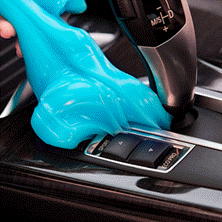
PULIDIKI Car Cleaning Gel Universal Detailing Kit
Make car cleaning effortless with the PULIDIKI Car Cleaning Gel Universal Detailing Kit, a simple yet effective solution for keeping your vehicle spotless. With over 89,741 ratings and an impressive 4.1-star average, it’s no wonder this kit is a highly rated Amazon Best Seller.
Loved by over 40,000 buyers in just the past month, it’s an unbeatable deal for only $6.99. Perfect for cleaning those hard-to-reach areas, this detailing gel is a must-have for car enthusiasts. Order now for just $6.99 at Amazon!
Help Power Techcratic’s Future – Scan To Support
If Techcratic’s content and insights have helped you, consider giving back by supporting the platform with crypto. Every contribution makes a difference, whether it’s for high-quality content, server maintenance, or future updates. Techcratic is constantly evolving, and your support helps drive that progress.
As a solo operator who wears all the hats, creating content, managing the tech, and running the site, your support allows me to stay focused on delivering valuable resources. Your support keeps everything running smoothly and enables me to continue creating the content you love. I’m deeply grateful for your support, it truly means the world to me! Thank you!
BITCOIN
bc1qlszw7elx2qahjwvaryh0tkgg8y68enw30gpvge Scan the QR code with your crypto wallet app |
DOGECOIN
D64GwvvYQxFXYyan3oQCrmWfidf6T3JpBA Scan the QR code with your crypto wallet app |
ETHEREUM
0xe9BC980DF3d985730dA827996B43E4A62CCBAA7a Scan the QR code with your crypto wallet app |
Please read the Privacy and Security Disclaimer on how Techcratic handles your support.
Disclaimer: As an Amazon Associate, Techcratic may earn from qualifying purchases.









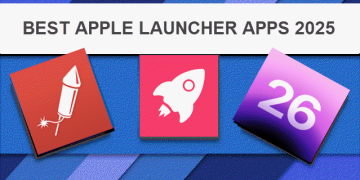










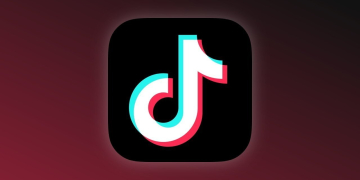
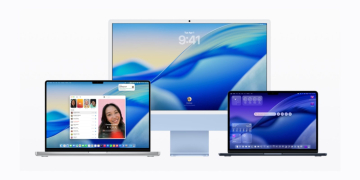
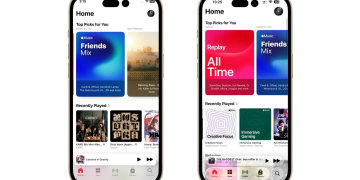












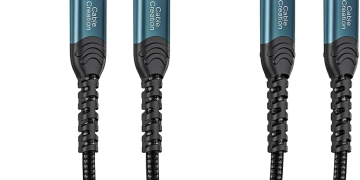
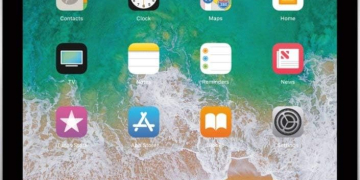
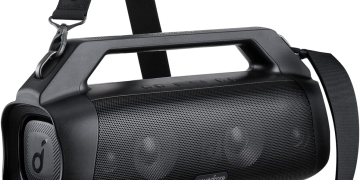
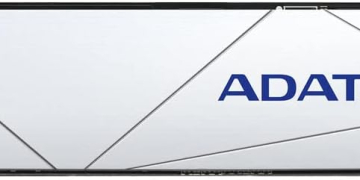
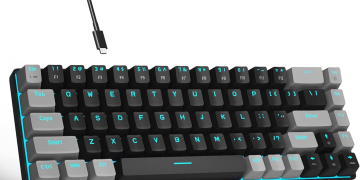













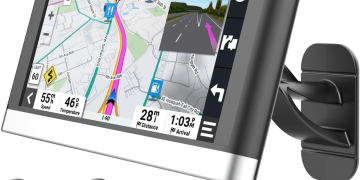

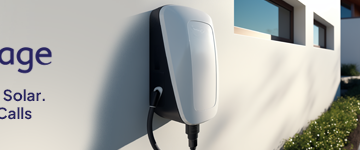
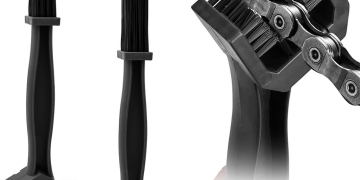

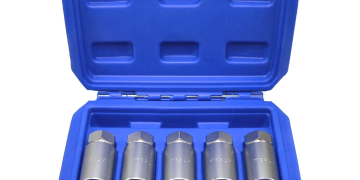
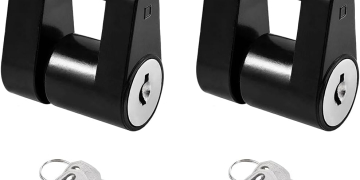


![I Want to Believe 2: UFOs & UAPs [DVD]](https://techcratic.com/wp-content/uploads/2025/07/610qUN-KiL._SL1000_-360x180.jpg)

